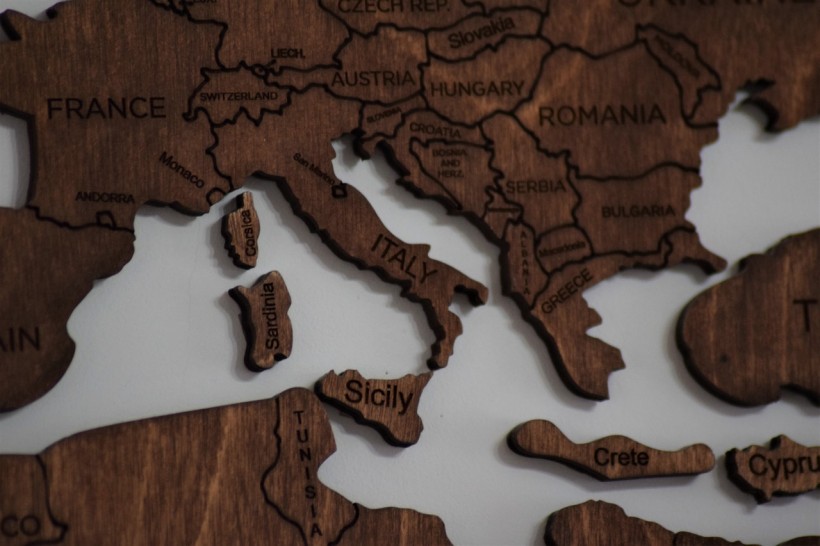A prehistoric continent may have been hidden between the borders of Asia, Europe, and Africa. The region is located in the present-day Balkan and Anatolia, leading the experts to dub the place as Balkanatolia.
Balkanatolia Continent in Eurasia During Eocene-Oligocene

Balkanatolia: the forgotten continent that sheds light on the evolution of mammals https://t.co/ui5fMIQU0G#science pic.twitter.com/JEfT5D6u01
— Bioengineer.org (@bioengineerorg) February 22, 2022
During ancient times, the Balkanatolia continent possibly had a diverse group of mammals roaming around the landmass.
According to a new study, the hidden continent could also be the gateway for many mammalian species to colonize Europe 34 million years ago after being separated from continents around it.
The shift in the region coincided with a major glacial period that was responsible for the completion of the Antarctic ice sheet. Within this period, the global sea levels lowered and connected the vast Balkanatolia to its neighbor, western Europe.
The geological event during this time, also known as the Eocene-Oligocene epoch, pushed over two-thirds of the mammalian species from the Arabian peninsula and the African continent to depart from their original habitat. Among the factors of the animal's disappearance in this period were the global cooling and intense drop in sea levels.
Meanwhile, species in Eurasia met a catastrophic mass extinction due to the extremities brought by the series of global activities. Most of the land and sea animals, as well as the plants, in Europe, had vanished. This event is known as the "Grande Coupure."
Behind the scenes of the Eocene epoch, eastern Asia and western Europe's geology developed their separate landmasses, each including a set of various mammalian faunas.
Europe's ancient forests are abundant with animals like Palaeotheres, a fauna that belongs in the lineage of the present-day horses that resembles the physiology of tapirs. Asia, on the other hand, was gifted with much more mammalian faunas compared to Europe, with some being existent in both continents, too.
ALSO READ: Firestorm That Consumed 10% of Earth Triggered an Ice Age 13,000 Years Ago
Asian Mammalian Colonization on Europe Earlier Than Grande Coupure
The Grande Coupure, which occurred 34 million years ago, led the Asian species to move and scatter across Europe. The period paved the way for the increase of new vertebrates and ignited the extinction of other native faunas.
But in previous studies, the Balkan fossils showed that prehistoric animals from Asia were already present in southern Europe between 5 to 10 million years prior to the Grande Coupure. With potential earlier colonization, the timeline and clues baffled scientists.
In the recent study, scholars from the United States, Turkey, and France collaborated with CNRS (Centre national de la recherche scientifique) to explain the gap before the Grande Coupure.
A fossil from Büyükteflek, Turkey, was utilized in the investigation. This clue yielded traces of Asian fauna heritage and evidence of the earliest in the Anatolian peninsula (Asia Minor). The Turkish fossil dates back from 38 to 35 million years ago.
The study also recovered a set of jaw fragments that might have been from Brontotheres, which are faunas that are quite similar to the large rhinoceroses and disappeared after the Eocene epoch.
In conclusion, Balkanatolia was already colonized 40 million years ago by Asian biodiversity long before the Grande Coupure, as the scientists first thought.
According to the authors, the dispersal event might have coincided with the precursor faunal transitions in prehistoric western Europe, predating the Grande Coupure and initiating the southern migration for Eurasia's species early in the late-middle Eocene. A lesser but similar turnover event as the Grande Coupure was also recorded in Asia, called the Mongolian Remodelling.
The study was published in the journal Earth-Science Reviews, titled "Balkanatolia: The insular mammalian biogeographic province that partly paved the way to the Grande Coupure."
RELATED ARTICLE: Ice Sheet Weight Change Caused Tilting of Earth's Landscape and Direction of Ancient Megafloods
Check out more news and information on Geology in Science Times.














